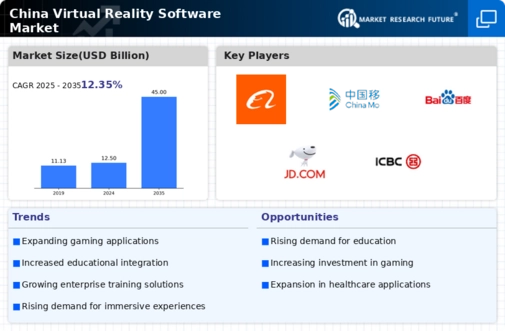The China Virtual Reality Software Market is an emerging segment characterized by rapid advancements in technology and increasing consumer adoption across various industries such as gaming, entertainment, education, and healthcare. As the market matures, competitive dynamics are shaping the landscape, notably influenced by innovations in hardware, software applications, and user experience enhancements.
Various local and international players are vying for market share, making it essential to closely monitor competitive strategies, product offerings, and partnerships that can elevate their position in this highly competitive environment. Stakeholders are not only focused on developing cutting-edge solutions but also aim to foster collaborations that enhance the overall virtual reality ecosystem, ultimately driving growth and consumer engagement.
Oculus has established a significant presence in the China Virtual Reality Software Market, largely attributed to its strong brand recognition and commitment to high-quality user experiences. The company has cultivated a loyal customer base by delivering robust virtual reality headsets and software that cater to diverse user interests, including gaming and social interaction within virtual environments. Oculus's platform offers a rich library of content, supported by ongoing software updates and compelling partnerships with game developers, educational platforms, and content creators.
This strategic approach positions Oculus favorably against competitors, making it a dominant player in the market as it capitalizes on the expanding demand for immersive virtual experiences among Chinese consumers.iQIYI has emerged as a prominent contender in the China Virtual Reality Software Market, leveraging its extensive content library and user-friendly platform to attract a wide audience.
The company specializes in producing and distributing high-quality virtual reality content, including films, documentaries, and interactive experiences, which significantly enhances user engagement. iQIYI's strengths lie not only in its innovative VR offerings but also in its extensive distribution network and partnerships with other content creators.
The company has actively sought mergers and acquisitions to bolster its technological capabilities and content portfolio, enabling it to remain competitive and relevant as the market evolves. With a strong focus on the Chinese market, iQIYI is well-positioned to capitalize on the growing interest in virtual reality experiences, solidifying its role as a key player in this dynamic sector.
















Leave a Comment